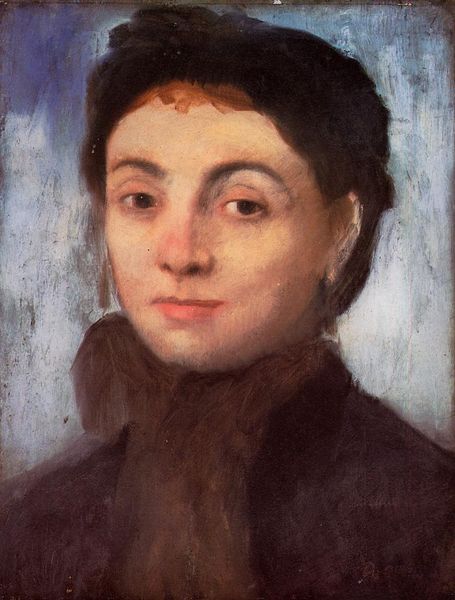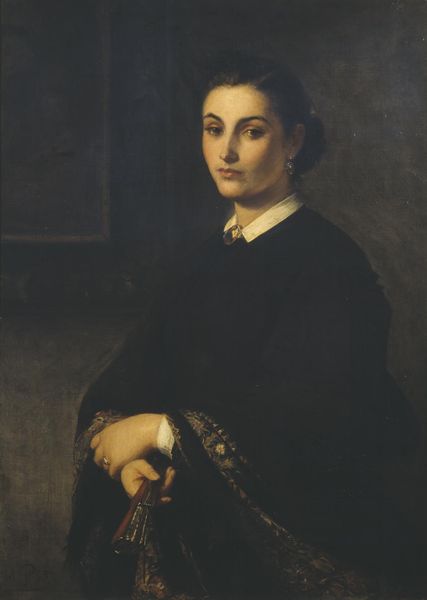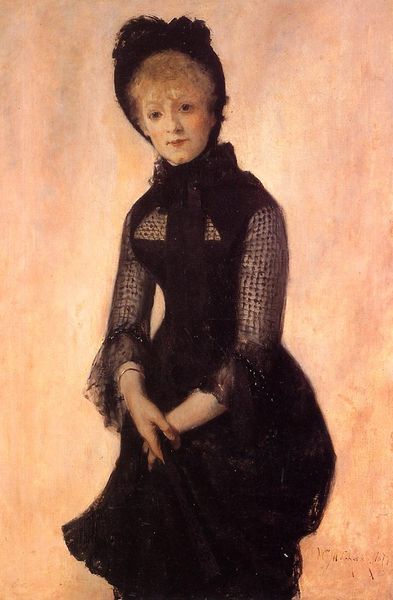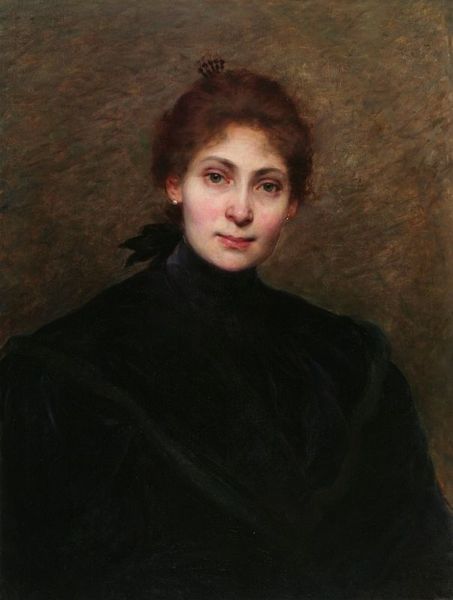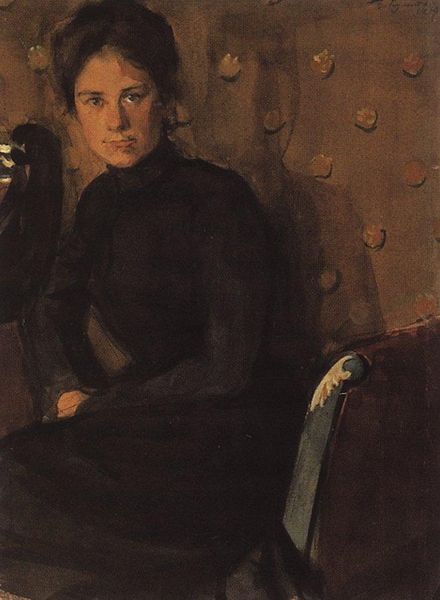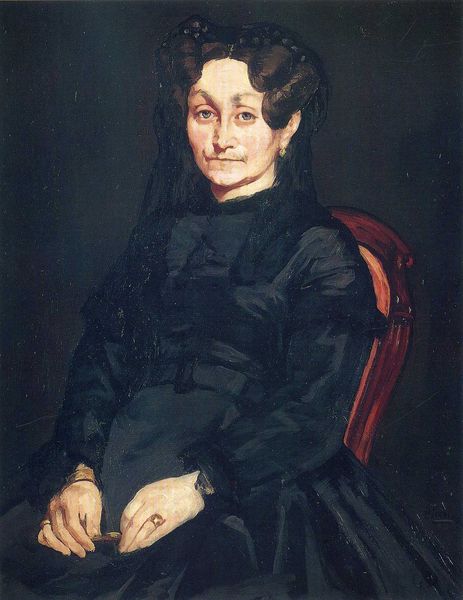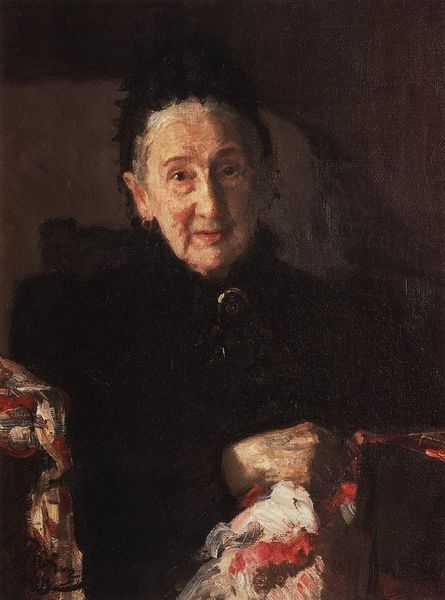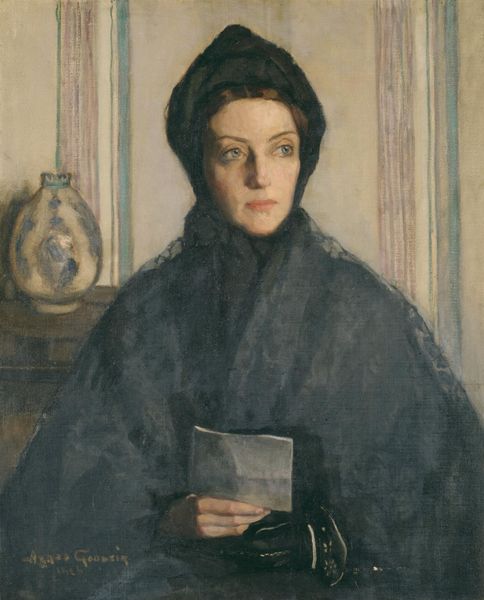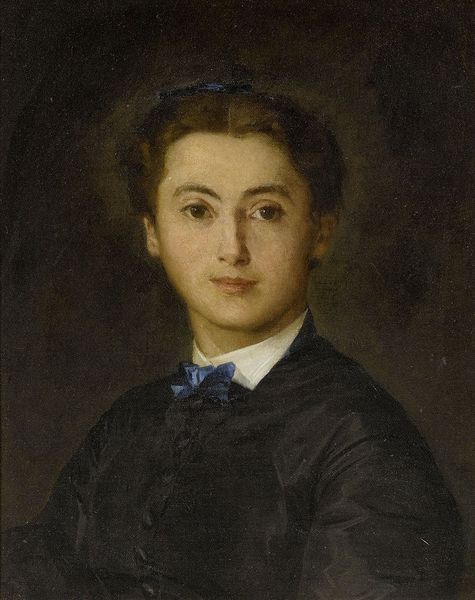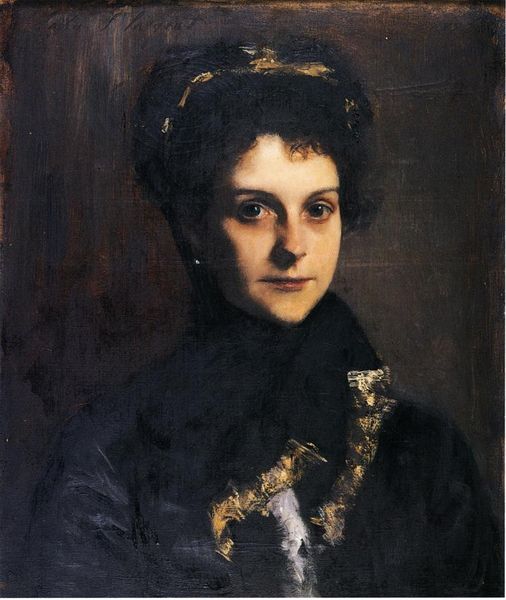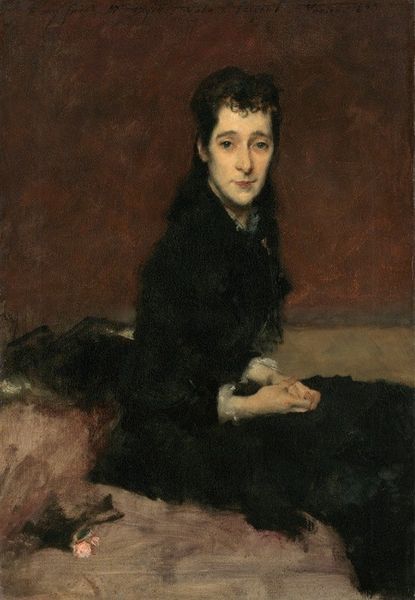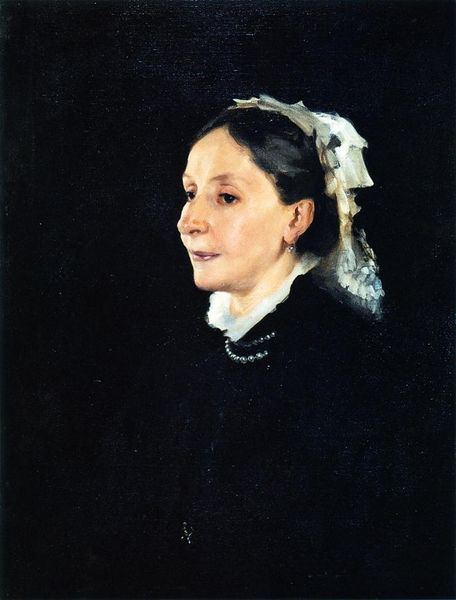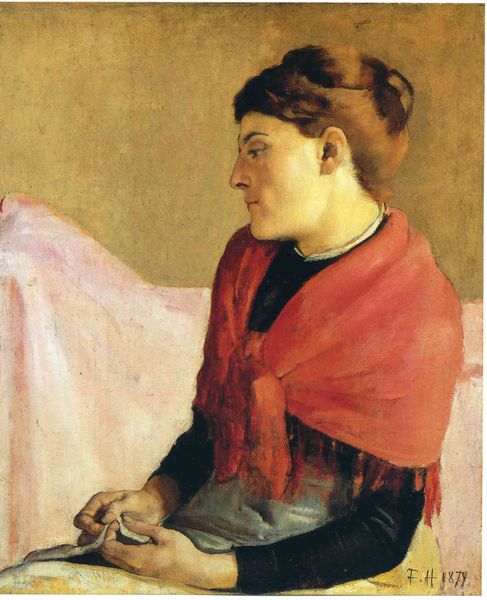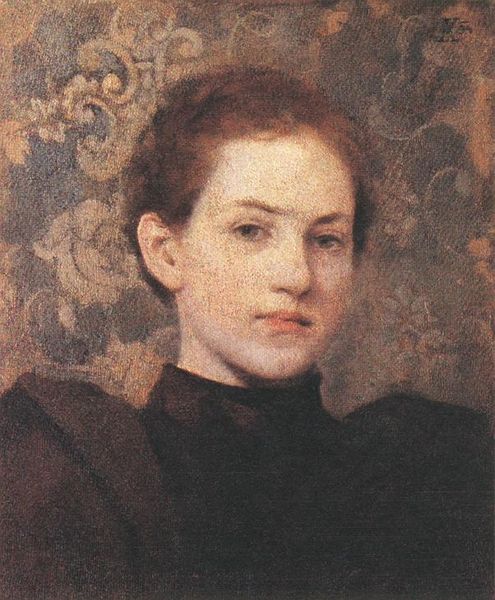
Dimensions: 61.2 x 45.7 cm
Copyright: Public domain
Curator: Edgar Degas painted this compelling portrait, "Josephine Gaujean," in 1867. The work resides here at the Isabella Stewart Gardner Museum. Editor: My first impression is one of quietude, almost somber. The muted palette, dominated by black and a kind of hazy gold, projects a withdrawn sensibility. Curator: Note how Degas renders the surface. Observe the nuances in the subtle gradations of black in her dress. Consider the tension between realism and romanticism here. He creates texture using visible brushstrokes, a nod to impressionism, while maintaining a traditional, representational form. Editor: Yet that black flattens her, merges her with the background. What about Josephine herself? The darkness can be viewed as reflecting a broader societal context. How were women, even those from privileged backgrounds, often confined within rigid social and domestic spheres at the time? Her dress almost feels like a visual metaphor for this confinement. Curator: Undoubtedly, you are raising critical ideas, but I tend to focus more specifically on Degas’ formal strategies. For instance, he uses light to direct the gaze to Josephine's face. The details are softly modeled, creating an individualized and humanistic form of observation. It's his skillful brushwork that I believe conveys the mood more than symbolic implications related to clothing or gender roles. Editor: It is important to think about gender roles in tandem with his handling of visual devices. Note how the dark dress serves as a stark backdrop that emphasizes her hands, resting delicately together. Her hands speak of constraint, both physically and metaphorically of how women had little means for freedom or agency in life. Curator: In my interpretation, the light creates visual interest and complexity while the artist portrays Gaujean with great sympathy. She's not presented as an object of subjugation, but instead is treated with dignity. This work serves as evidence for the importance of his approach. Editor: Indeed, this painting can be viewed as having both those things, capturing complexity and conflict simultaneously. To see it is to be in discourse with so many cultural issues of its period.
Comments
No comments
Be the first to comment and join the conversation on the ultimate creative platform.
